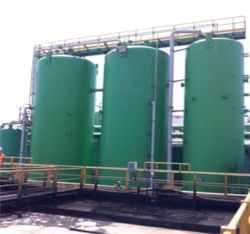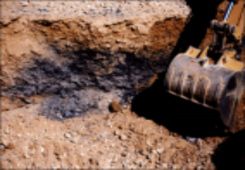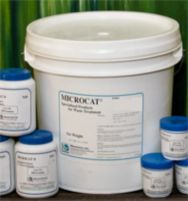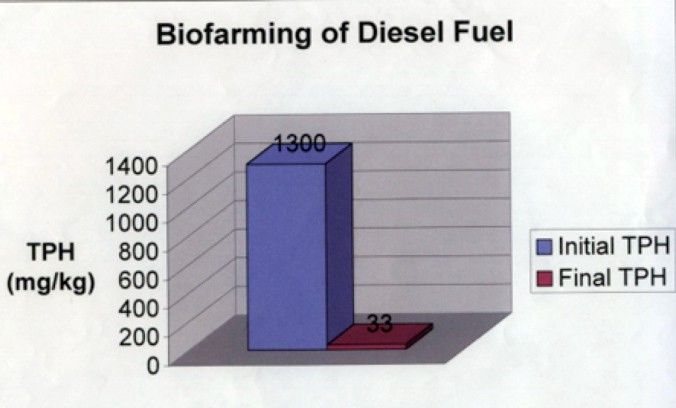Natural remediation of a soil contaminated by hydrocarbons
Natural remediation of a soil contaminated by hydrocarbons, the best and optimal solution
The remediation of the contamined soil with Bacteria
Application of BACTERIA® natural products on soil contaminated by hydrocarbons in an industrial terrain previously occupied by oil storage tanks.
 Every now and then there happen ecological disasters caused by oil spills in the environment. The most known are those produced by maritime accidents of oil ships, like the PRESTIGE in northwestern Spain coasts, the EXXON VALDEZ in Alaska, the explosions on OIL PLATFORMS in the Gulf of Mexico, or the SPILLS IN THE COAST of Nigeria. But there are also a lot of focuses of contamination of less incidence, like the breakdown of oil pipe lines, dismantlement of oil facilities, etc. These won’t appear many times on the press, but they are focuses of contamination for the ecosystems and for the nearby population.
Every now and then there happen ecological disasters caused by oil spills in the environment. The most known are those produced by maritime accidents of oil ships, like the PRESTIGE in northwestern Spain coasts, the EXXON VALDEZ in Alaska, the explosions on OIL PLATFORMS in the Gulf of Mexico, or the SPILLS IN THE COAST of Nigeria. But there are also a lot of focuses of contamination of less incidence, like the breakdown of oil pipe lines, dismantlement of oil facilities, etc. These won’t appear many times on the press, but they are focuses of contamination for the ecosystems and for the nearby population.
It is not always easy to solve the problem, not because of the lack of experiencie technical solutions, but for the political or economical interests of the big companies, that place their own interests before the most practical and effective solution to the problem.
It has been proved that the best solutions are natural biological treatments using biogrowing. This technology allows to purify soils and subterranean waters polluted by toxic and inhibitor organic compunds, oil and its compounds among others. Biogrowing can be used in most situations where these compounds are present, those being metabolized by natural organisms that remove completely the polluting environment.
 A practic case of bioremediation consisted of applying BACTERIA® XBS on a soil where a hydrocarbon storage tanks had polluted the environment, because of their dismantlement. To see the difference between a hydrocarbon natural degradation and that helped by the application of BACTERIA® XBS, wastes of C-13 and C-15 from the tanks were inoculated on two reactors of an electrolytic respirometer. Without any additive, within 75-80 hours a significant oxygen consumption was detected, which meant the polluting was starting being degraded. In the simulation cells, only 15% of the hydrocarbons was eliminated after 14 days and 45% after 28 days. Later, BACTERIA® XBS was inoculated in other samples. Reductions were of 39% after 14 days and 78% after 28 days, which indicates the inhibitor nature of the hydrocarbon solvent and a doubled biodegradation speed by biogrowing.
A practic case of bioremediation consisted of applying BACTERIA® XBS on a soil where a hydrocarbon storage tanks had polluted the environment, because of their dismantlement. To see the difference between a hydrocarbon natural degradation and that helped by the application of BACTERIA® XBS, wastes of C-13 and C-15 from the tanks were inoculated on two reactors of an electrolytic respirometer. Without any additive, within 75-80 hours a significant oxygen consumption was detected, which meant the polluting was starting being degraded. In the simulation cells, only 15% of the hydrocarbons was eliminated after 14 days and 45% after 28 days. Later, BACTERIA® XBS was inoculated in other samples. Reductions were of 39% after 14 days and 78% after 28 days, which indicates the inhibitor nature of the hydrocarbon solvent and a doubled biodegradation speed by biogrowing.
In a greater scale, the soil to treat was divided into three treatment areas. Each one was covered to prevent the volatilization of hydrocarbons and rain infiltration. The conditioning of the soil included the microbial product BACTERIA® XBS in a water suspension plus the required levels of nutrients BACTERIA® NPN for microbial growing. First the product was extended digging at a depth of 35 cm, then another 35 cm where powder with nutrients and inoculed, antoher final 35 cm in which the product was inoculated. To accelerate the remediation, the three phases of soil were mechanically mixed, thus providing enough aeration for microbial gwowth.
The final analysis showed levels far below the initial ones. On 12 samples, 7 threw a total HTP hydrocarbon values below 10 mg/kg. Additional analysis for benzene, toluene, ethilbenzene and xylene (BTEX) and for the total organic halogens (TOX) indicated levels below the detection levels in all soil samples.
IN CONCLUSION: Static bioremediation adding natural microorganisms to the soil is an efficient treatment method in relation with the cost, for hydrocarbon polluted soils. In the commercial aspect, this microorganisms are BACTERIA® XBS and BACTERIA® NPN nutrients.
This technology was proposed to the Spanish Marine Ministery when the sinking of the PRESTIGE in the coasts of Galicia happened. The response from the Ministery was that they already had their own methods for cleaning.




